Uncategorized
-
Eighth Annual Children’s Choice Book Awards Finalists Announced
New York, NY — February 19, 2015 – Every Child a Reader (ECAR) and the Children’s Book Council (CBC) have announced the finalists in the eighth annual Children’s Choice Book …
-
On Tour with National Ambassador Kate DiCamillo
DiCamillo spoke with Bainbridge Community Broadcast host Nancy Soulé about her platform as National Ambassador, and her upcoming visit. (What’s Up Bainbridge)
-
Free Comic Book Day Kicks Off 96th Annual Children’s Book Week Celebration!
Comics industry leaders Diamond Comic Distributors and Comic Book Legal Defense Fund (CBLDF) are partnering with Every Child a Reader and the Children’s Book Council to bring greater focus to …
-
‘Day of Diversity’ Action Points
Some of the action points include donating books to an under-resourced school; buying and reading books by diverse authors and featuring diverse characters; and partnering with local organizations to distribute books to …
-
Announcing the Mathical Book Prize Launch
Nicole Deming, Interim Director of the Children’s Book Council, says of the new award program: The Children’s Book Council is excited to partner with MSRI to create a go-to source …
-
Announcing the 2015 Notable Social Studies Trade Books for Young People
Reviewers look for books that emphasize human relations, represent a diverse range of cultural experiences, and present an original theme or a perspective. A preview of this year’s selected titles …
-
CBC Diversity: How Will YOU Step It Up?
Contributed to CBC Diversity by Janet Wong
The biggest publishing story of last yearwas diversity: the #WeNeedDiverseBooks movement, the watermelon “joke,”and the way the two overlapped when WNDB’s Indiegogo campaign topped $334,000,thanks to an apology.
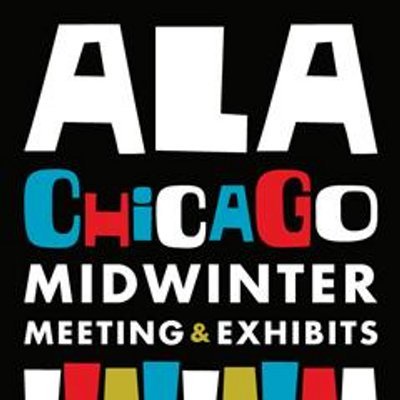
Diversity is the biggest story of this yearso far, too, with the ALSC/CBC collaboration on the Day of Diversity: Dialogue & Action event, which was just held at ALA Midwinter 2015 in Chicago on January 30. I’m eager to see what comes in the next weeks, months, and year from former Executive Director of the CBC Robin Adelson’s challenge: “it’s now time to move from talk to action.” In addition to the Day of Diversity, a session called “Stepping It Up With Action!” was held on February 1 and ALSC will be hosting follow-up community forums and webinars to continue the conversation and make sure everyone is involved in action steps.
How do you plan to step it up? What kind of action would you like to see?
I’d like to see more along the lines of the #WeHaveDiverseBooks hashtag that Scholastic has made popular—with increased support for inclusive titles that were published in the last twenty years. You can find handy lists of the Notable Books for a Global Society (NBGS) winners from 1996 to the present here.
Last year, many people between 20 and 30 years old held up a #WNDB sign proclaiming “when I was a child, I never found a book with someone like me in it.” But the problem resides in finding these inclusive books, not in their existence. Kids need the opportunity to connect with authors like Alma Flor Ada, Joseph Bruchac, Virginia Hamilton, Pat Mora, Walter Dean Myers, Naomi Shihab Nye, Allen Say, Rita Williams-Garcia, and Laurence Yep. Of course, even teachers and librarians have trouble finding these authors; this is why educator Yvonne Siu-Runyan started the NBGS committee in 1995.
The committee’s mission then and now is simple: identify 25 outstanding trade books for Pre-K to Grade 12 each year that promote understanding across lines of culture, race, ethnicity, sexual orientation, and values. But having a list is just part of it; the NBGS committee empowers teachers to share those books with classroom-ready teaching suggestions and related materials in a hefty article published each spring in The Dragon Lode journal.
This year’s just-released NBGS list of books, linked here in a printer-friendly PDF for sharing, includes already-classic titles such as Beyond Magenta, Brown Girl Dreaming, El Deafo, and Silver People—but it also includes books that you won’t stumble on in your average browsing experience in a bookstore or online. Here is one page from the four-page PDF that lists all 25 winners.
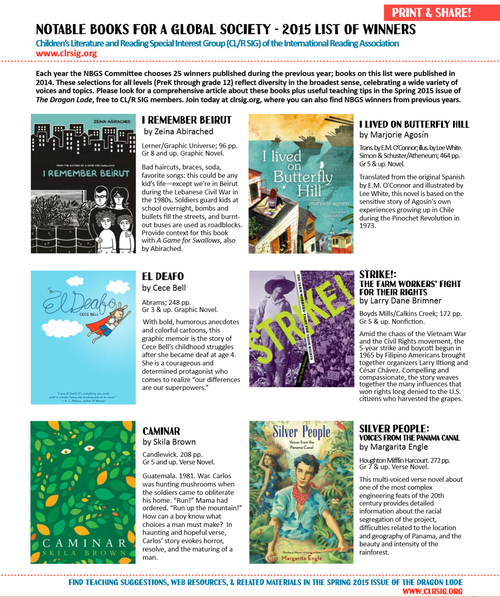
Stay tuned for teaching suggestions and related materials for these titles in the Spring 2015 issue of The Dragon Lode.
* * *
As Joni Mitchell sang in “Big Yellow Taxi”:
Don’t it always seem to go
You don’t know what you’ve got ‘til it’s gone
I’m stepping it up this year by posting something on social media each week that links a wonderful inclusive title from the past 20 years with a new classic. This week, I’m linking two books by the same author, one from the 1996 NBGS list and the other from the 2015 list. Both titles share a Brooklyn setting and a main character who loves to write and is being raised by a single mother.
From the 1996 NBGS List:
- From the Notebooks of Melanin Sun by Jacqueline Woodson (Scholastic/Blue Sky)
From the 2015 NBGS List:
- Brown Girl Dreaming by Jacqueline Woodson (Penguin/Nancy Paulsen)
How about that pair for a look at then and now? Yes, #WNDB: let’s keep on making new classics in diversity. But #WHDB too: and let’s keep our existing gems alive.

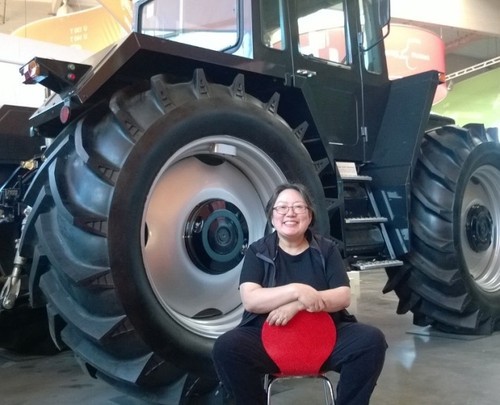
Janet Wong (janetwong.com) is an author, anthologist, publisher, and literacy volunteer who is the immediate past chair of the NBGS Committee. Discover more about the CL/R SIG and the NBGS at clrsig.org.
-
New Author and Illustrator Awards & Selection Process Announced for the 8th Annual Children’s Choice Book Awards
New York, NY — January 29, 2015 – Every Child a Reader (ECAR) and the Children’s Book Council (CBC) have announced the addition of three new categories in the 8th …
-
Multicultural Children’s Book Day 2015
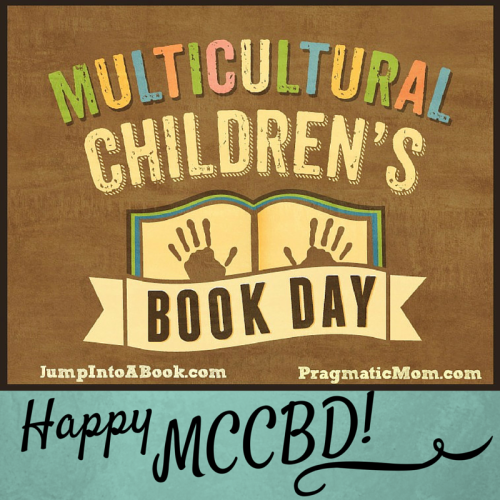
Explore the official website for Multicultural Children’s Book Day to:
- Learn about amazing, diverse authors and illustrators
- Read multicultural children’s book reviews
- Participate in a virtual book drive
- Talk about diversity in children’s literature during the #ReadYourWorld Twitter chat
- And so much more!
-
CBC Diversity: ‘It’s Possible’ Series Honors Walter Dean Myers
In a poignant letter addressed to the late author and National Ambassador for Young People’s Literature, Andrea Davis Pinkney — VP and Executive Editor of Trade at Scholastic — introduces …
-
Kate DiCamillo Named National Summer Reading Champion
Washington—The Collaborative Summer Library Program (CSLP) has announced its partnership with award-winning children’s book author and National Ambassador for Young People’s Literature, Kate DiCamillo, as its first ever National Summer …
-
CBC Diversity: Inclusion vs. Diversity
Contributed to CBC Diversity by Tonya Cherie Hegamin
Human brains like to compartmentalize, and I believe that the term “diversity” serves to place people in boxes marked “other”. However, as individuals, the cultural, physical and learning differences we have must harmonize for survival. I expect to be addressed as a whole human, not one whose life circumstances make me ‘different’. Truly, “diversity” in its best light seeks to celebrate our differences, to acknowledge those on the margins of “normal”, but it does not necessarily seek to include all of us as we are. Would you choose to just be tolerated or to be wholly accepted as you are?
Personally, I consider myself to be beautifully complicated. On the surface, many people might think I’m Latina or biracial because of my skin color and hair. In reality I am multi-racial, just like so many other people. Once when I was five, a neighbor (who was white) asked me “What are you?” I didn’t understand—I asked my mother and she told me to say I was “black”. When I went back to my playmate, she informed me that I couldn’t be black because I didn’t look, act or sound black, and if I was black her parents would refuse to let her play with me. That’s a lot for a five year old to handle. Not just for me, but for this girl who was subjected to a binary world where some people were “acceptable” while others were not.
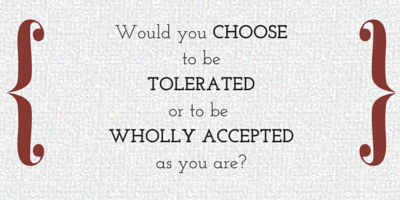
For me, it was only the first of a countless number of times people demanded to know what I was. I come from a long line of ‘light skinned’ African-Americans (both my paternal grandfather and great grandfather passed for white to get jobs) who mingled with Nanticoke Indians (my maternal grandfather could trace his family to the last ‘royalty’ of the tribe), also Dutch, Haitian, Scottish and probably a hundred other combinations. Both sides of my family still hold emancipation papers from ancestors who begat the children of their masters. Internalized racism, color-isms and social/class structures probably supported my family marrying those whose experience was similar; yet we still identify as black or African-American. At this point, I’ll remind us all that “race” is a social construct created to specifically compartmentalize dark skinned people as inferior and white Europeans as superior. However, we are still hooked on creating separate compartments for people, and I believe the claim of ‘diversity’ supports that line of thinking.
But my beautifully complicated world does not hinge on race or culture alone. I also have dyscalculia (a learning disorder) and a chronic immunodeficiency disease which requires multiple daily injections and also causes chronic pain, fatigue and depression. Therefore I’m in the “disabled” compartment too. I am also bisexual, yet another compartment. Do I live in a compartmentalized body, mind and soul? Of course not. I have learned to integrate and include all of that “diversity” as a part of my singular human experience. At five, I just wanted that playmate to include me in the fun. Growing up I became severely depressed trying to prune myself to fit into one group or another; now I realize it never works, I accept myself as I am.
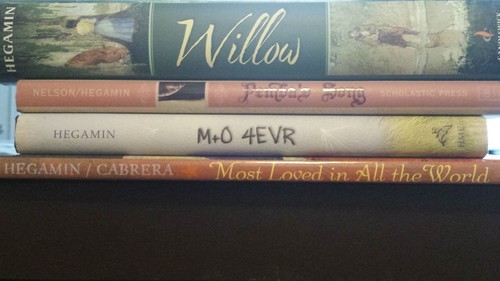
Teaching in a predominantly black college in Brooklyn, NY also made me realize the value of inclusivity over diversity. In my Children’s and Young Adult Literature classes, we critically examine inclusive literature and how it allows readers access to a variety of world views and perceptions. I’ve learned another hard lesson in those classrooms—I realized that I suffer from ‘perceived commonality’. I thought that because my students were also black, we shared a communal memory of racism in America. I now know that many of my students would never identify themselves as black, much less American. They are all just as beautifully complicated as me!
I stress to my future teachers to teach the individual as they are, to include a variety of perspectives. As a writer, I strive for that, too, but I also try hard to make every character as “real” as possible; for me, that means including all the contradictions and complexities that in the end, makes them beautiful.


Tonya Cherie Hegamin is the author of the young adult novel Willow, M+O 4EVR and the coauthor with Marilyn Nelson of Pemba’s Song. She received an Ezra Jack Keats New Writer Award and a Christopher Award for her picture book Most Loved in All the World, illustrated by Cozbi Cabrera. She is the creative writing coordinator at Medgar Evers College in Brooklyn. Learn more about Tonya by visiting her website: www.tonyacheriehegamin.com.
-
‘It’s Possible’ Series: A Place in History
An “It’s Possible” post contributed to CBC Diversity by Jennifer M. Brown
"Each of us is born with a history already in place." Those words open Walter Dean Myers’s memoir, Bad Boy. The word “history” applies to that of the individual child, born into a family and a set of circumstances. “History” is also tied to a physical place. Walter Dean Myers was profoundly aware of both.
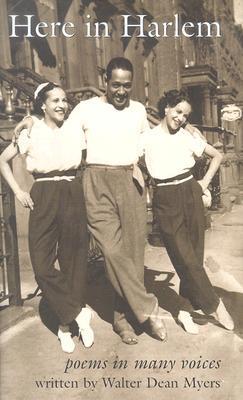
He believed that individuals could change history; he watched them do it, and he was an instrument of change himself. He also had deep ties to his childhood home in Harlem. From his picture book Harlem, illustrated by his son Christopher Myers, to his Newbery Honor book Scorpions and the inaugural Printz winner, Monster, he wrote of Harlem’s glories and its sorrows. If you were lucky enough to hear him tell stories of his youth, he’d describe walking down the street and stopping to talk with Langston Hughes, and attending dances and sermons at “a shouting church,” immortalized in one of the poems in Walter’s collection Here in Harlem.
I was 21 and assistant to Bill Morris, director of library promotion at Harper & Row, when Bill introduced me to Walter. They made a comical pair. Bill, the Southern gentleman at 5’2”, and Walter, a full foot (and then some) taller and a straight-shooter New Yorker. But they were great friends, and had the utmost respect for each other. From this vantage point, I got to hear Walter speak at numerous conferences. Wherever Walter went, he commanded a room, standing head and shoulders above most of the people in it. It wasn’t always what he said that made you tilt forward, trying to eavesdrop. It was the way he listened, followed by the concise response that conveyed how closely he’d listened, sometimes responding to what you hadn’t said.
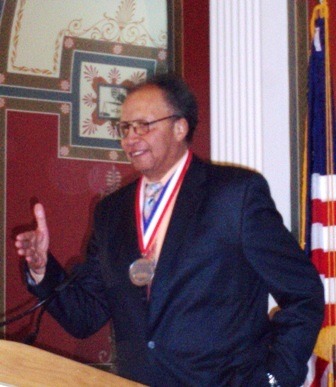
A year ago, when Walter Dean Myers, as National Ambassador for Young People’s Literature, passed the torch to his successor, Kate DiCamillo, he described what he called the most important moment in his two years as Ambassador: “I was in a prison that was loosely run. By that I mean, some talking is allowed among the inmates,” Walter said. When he started to speak, an inmate was talking. “‘Keep quiet, I want to hear this,’ one inmate said to the other,” Walter recalled. “That touched me. I knew this program was working.”
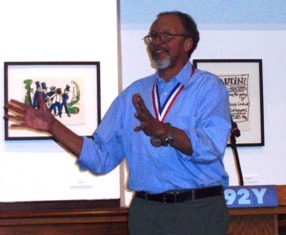
When Walter spoke at the 92nd Street Y, a year into his ambassadorship, he described a conversation he’d had with Langston Hughes when Walter was in his 20s. Hughes had been criticized for writing for “the lowest element of black life,” as Walter put it. Hughes told Walter, “That’s who I want to write for.” In his book Just Write: Here’s How! Walter wrote, “Reading probably saved my life.” For him, reading was not an option, it was essential. He transformed his personal credo into his platform as ambassador: “Reading is not optional.” He also says, in Just Write, “I write books for the troubled boy I once was, and for the boy who lives within me still.” He worried about the kids who begin school behind, and how only 15% of them ever catch up.
He worried about them because he’d been where they were and he’d walked in their shoes. He also wanted to give them hope—if this “bad boy” could turn his life around, so could they. He knew, too, that his stories could appeal to people who had not walked in their shoes. If Walter, as a teenager, could relate to Stephen Daedalus in James Joyce’s A Portrait of the Artist as a Young Man, then books could unite all races and cultures. Books could save the lives of young people everywhere, in myriad ways.
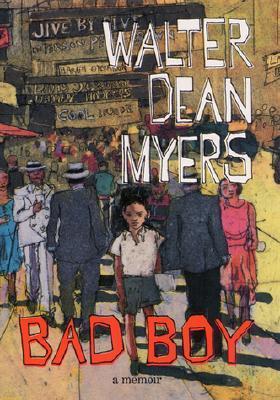
Even after he’d won the inaugural Printz Award, multiple Coretta Scott King Awards and Honors, Newbery Honors, the Virginia Hamilton Award, the Margaret Edwards Award and been named a National Book Award finalist numerous times, Walter continued to challenge himself. Soon after he’d won a MacDowell Colony Fellowship, to spend some uninterrupted time writing in a cabin in New Hampshire, he told me his goal while there was to “slow down.” He wanted to write fewer pages a day. But I don’t think he ever could. He had too much to say.
It’s hard for me to believe that Walter Dean Myers no longer walks the earth. His sense of humor, his world view, his wisdom, remain with me. Hardly a day goes by when I don’t think, What would Walter say about this? What would he notice that I’m missing? How can I pay more attention to what matters? The closing lines of Bad Boy uplift me: “Writing had let me into a world in which I am respected, where the skills I have are respected for themselves…. All in all it has been a great journey and not at all shabby for a bad boy.”

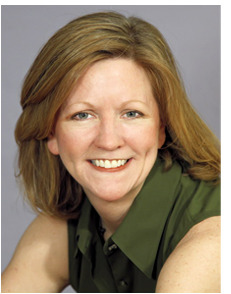
Jennifer M. Brown has been in children’s books for more than 25 years. She writes for School Library Journal, Kirkus Reviews, and is children’s editor of Shelf Awareness. She is also the director of the Center for Children’s Literature at the Bank Street College of Education.
-
‘It’s Possible’ Series: “Okay, Love.”
An “It’s Possible” post contributed to CBC Diversity by Virginia Anagnos
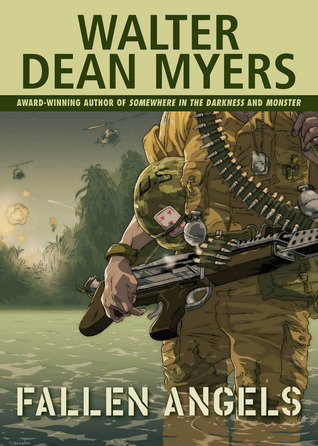
I was a publicity assistant at Scholastic Inc., when I first became aware of Walter Dean Myers’ work. The book: Fallen Angels. My perspective on children’s literature was changed forever after reading the first few pages, and by the end of the book I was in awe of the man.
I met Walter a few years later while working on Brown Angels and the photographic exhibit based on the book, which traveled across the country. My first encounter with him exemplified our ensuing relationship.
He had refused a car service to Harlem for the opening of the Brown Angels exhibit, and we agreed to take the subway together to the publisher’s dismay. Hey, it was the early ‘90s—NYC subways were not what they are today.
We were looking over the media coverage when a fight broke out among some teens. Walter immediately tried to divert my attention by insisting I read the review in Newsday again. He kept tapping the newspaper and saying, “Read here, read here!”—while looking at the group, not realizing that the paper was upside down. I smiled and said “I’m a Queens girl. I’m not rattled by a little noise. I got your back.” (Amusing visual, since I am 5 feet petite to his over 6 foot frame.)

Walter made an indelible impression on me during that campaign. He was steadfast in his conviction that children needed to recognize themselves in books like Brown Angels. They also needed to see themselves as beautiful and valued. I knew the importance of reading, but he helped me realize the power and potential impact of a children’s book on young lives. It was an idea that was expressed consistently through our work together and informed my work as a book publicist.
I was excited when years later his agent, Miriam Altshuler, approached me about working on Walter’s newest book, Shooter. I had left publishing and was (and still am) working at Goodman Media International, the PR firm. I loved working on book projects and was thrilled to be reunited with Walter.
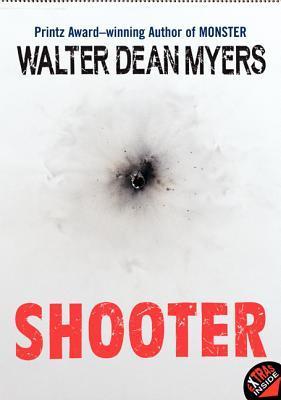
The routine went something like this: Miriam would call and say, “Walter has a new book, would you consider working on it?”—as if there was any doubt. After reading the manuscript, I’d call Walter. We would have in-depth conversations about the story, how this latest book fit into his overall repertoire, and how we’d leverage this opportunity, as well as our previous efforts to reach kids who were on the brink of making a choice that would affect them for the rest of their lives. Of course, we also talked about the latest antics and mischief caused by his cat. But at the end of each call, any call, he would always say: “Ok, love,” and the work would begin.
The campaigns were as varied as the many formats and genres of his books. We went beyond the traditional media relations strategy—everything from pursuing school adoptions for his books, to partnering with organizations on unique-to-his-book initiatives such as “Second Chances,” to appealing to the Supreme Court Justices while they deliberated on whether to ban life sentences in some teen cases. (They did ban them!) Anything and everything to reach, protect and give voice to youth, especially those who needed it most.
Large and small victories had a compounding effect until Walter was named National Ambassador for Young People’s Literature. We knew unequivocally what his platform would be: Reading is not optional. It embodied his journey and was unwavering in its stance—just like Walter Dean Myers.
The last time I saw Walter Dean he was addressing a group of foster parents when a parent asked: “Is a single parent enough to raise a child?” He replied swiftly: “Absolutely, as long as that child is loved.” I struggled to hold back my tears. As a single parent, I took great comfort in his response. Raising sons was also a topic we occasionally discussed on those long calls. I wanted to tell him what that response meant to me and thank him for his answer, but I never got the chance.
Thinking about it now, how do you thank a man whose compassion was boundless; whose tenacity to portray poor inner-city children as human in the eyes of the reader was relentless; who forged new paths with his work and for others just like him, who challenged us and inspired us to be our best selves? I know what I would say.
“Walter, we got your back. We’ll make sure your legacy lives on. Ok, love.”

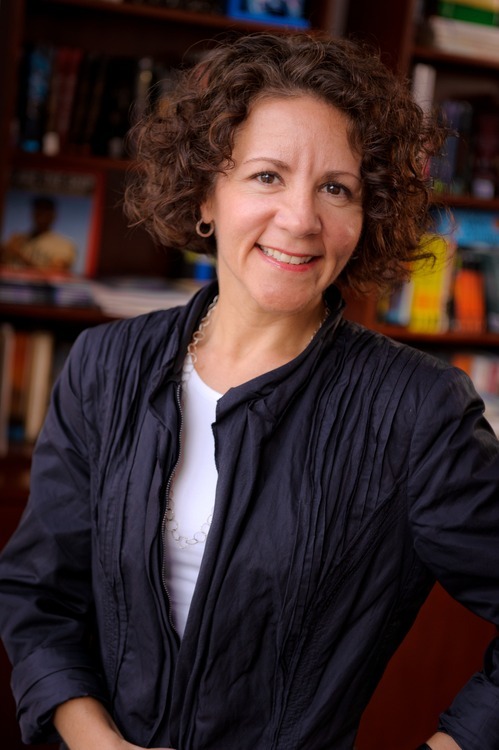 Virginia Anagnos, Executive Vice President at Goodman Media International, has established and spearheaded significant initiatives and events for numerous publishing and literary clients. Prior to joining Goodman Media, Anagnos spent thirteen years in book publishing executing publicity campaigns for noted authors and historical figures.
Virginia Anagnos, Executive Vice President at Goodman Media International, has established and spearheaded significant initiatives and events for numerous publishing and literary clients. Prior to joining Goodman Media, Anagnos spent thirteen years in book publishing executing publicity campaigns for noted authors and historical figures. -
Books for Asia and Publishers Rally for Typhoon Haiyan Relief
In November 2013, Typhoon Haiyan took more than 4,000 lives and displaced 4 million people, while entire towns were washed away or severely damaged. With funding provided by the Australian government, Books for …
-
The CBC’s Common Core Resource Page is Now Live!
We’ve created an accessible resource hub for the Common Core State Standards, including an overview, relevant articles, FAQs, and video tutorials on implementing the initiative. Whether you’re an educator or librarian …
-
Kate DiCamillo Named ‘Star Tribune’ Artist of the Year
As National Ambassador for Young People’s Literature, DiCamillo travels the country spreading the joy of reading to her young fans. It should come as no surprise that, in honor of her …
-
Coming in January: Multicultural Children’s Book Day Spotlight
Running from January 1 through the 25th, the series will feature interviews with 25 “inclusive authors and illustrators,” providing readers an inside look at their creative processes. Visit MCCBD’s official site for information about the participating …
-
Kate DiCamillo on her Mission as National Ambassador
Though DiCamillo did not always know that she wanted to write, she fell in love with books at a young age and hopes to inspire that same passion for literature in kids …
-
Nominate a Literary Landmark For Children’s Book Week 2015
In an open letter, Staino says: “It would be great if you or your state organization would take the lead in nominating a possible Literary Landmark in your State. You …





















